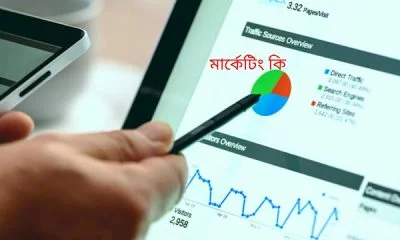Interview
What Is the Most Overlooked On-Page SEO Factor in 2025?

What Is the Most Overlooked On-Page SEO Factor in 2025?
“Experts Wanted: What’s the single most overlooked on-page SEO factor in 2025?”
Here is what 22 thought leaders had to say.
Keywords Lose Power as Context Gains Importance
The role of keywords in SEO is shifting, perhaps even shrinking.
It remains a key tool for research to understand what people are looking for, but losing its SEO powers on-page. Google, and machine learning models, particularly, are getting smarter to understand the context and intent. The trend towards longer search queries is helping this too.
Thinking about content, keyword stuffing is losing its effectiveness and a net-negative as far as content quality and polish is concerned.
SEO pros should focus more on semantic relevance, contextual optimization, and a producing better content for website vistors, indexing bots, including vector indexers.
Lawrence Ladomery, Marketing Specialist, WPBakery
——————————————-
Internal Link Velocity: The Overlooked SEO Advantage
The most consistently overlooked on-page SEO factor in 2025 is internal link velocity – the strategic acceleration of internal linking to newly published or updated content.
One revealing case study comes from a B2B software company that significantly outpaced competitors by implementing this approach:
While most SEO strategies focus on building internal links statically during content creation,
our analysis showed that Google’s increasingly sophisticated temporal evaluation favors content receiving consistent internal linking signals over time rather than all at once.
The implementation strategy included:
Creating an “internal link calendar” triggering systematic linking to new content from existing high-authority pages over 6 weeks post-publication
Developing a linking taxonomy matching anchor text diversity to the content’s semantic profile
Implementing automated tracking identifying opportunities to add contextual links from older content based on topical relationships
Establishing a gradual linking velocity pattern starting with category-level pages and progressively adding more specific deep links
Adjusting link velocity based on initial performance signals rather than following a rigid schedule
The results were definitive:
Content with phased internal linking achieved indexing 67% faster than content receiving all internal links upon publication
Average time to page one rankings decreased by 42% for target keywords
Organic traffic to new content increased by 54% compared to previously published similar content
Content receiving ongoing internal link velocity maintains ranking stability 3x longer than static-linked content
Why is this overlooked? Most SEO practitioners still treat internal linking as a one-time implementation task rather than an ongoing strategic process requiring deliberate timing.
As search engines become increasingly sophisticated at evaluating content authority signals over time, the temporal pattern of internal link acquisition has become as important as the links themselves.
By implementing systematic internal link velocity patterns, content experiences more natural discovery and authority building that closely mimics how external links are naturally acquired, providing a significant competitive advantage in increasingly dynamic search landscapes.
Roshan Singh, SEO Executive, Urban Monkey
——————————————-
Scroll Depth Signals Replace Technical SEO Focus
In 2025, one of the most overlooked on-page SEO factors is scroll depth and engagement-based content structuring. While many still focus heavily on technical elements like meta tags, internal linking, and header optimization, fewer are paying attention to how real users interact with content once they land on a page—and that’s where the real signals to search engines are coming from.
At Pearl Lemon, we’ve shifted much of our content strategy toward analyzing scroll maps and behavioral data to structure content in a way that encourages consistent engagement. This means placing the most valuable or intriguing information higher up to hook users immediately and designing the flow of the page like a story, guiding visitors naturally from section to section.
We also integrate interactive content—like embedded tools, mini-assessments, or collapsible FAQ sections—to break up the monotony of long-form pages. These elements aren’t just visually engaging—they tell Google that users are active and interested.
The bottom line? Search engines now reward not just what you say, but how well your page holds attention. Scroll depth is increasingly treated like a vote of confidence in your content’s value, and it’s one of the clearest behavioral signals available. Pages that show signs of deeper engagement often outperform those that are technically optimized but ignored by users.
Deepak Shukla, CEO, Pearl Lemon
——————————————-
Trust Signals Emerge as Critical SEO Factor
One of the most overlooked on-page SEO factors in 2025 is trust signals, especially as Google continues prioritizing EEAT (Experience, Expertise, Authoritativeness, and Trust).
While most sites focus heavily on keywords and technical structure, they often miss simple credibility builders that impact both rankings and conversions. These include:
– Author bios with real credentials and LinkedIn profiles
– Citing reputable sources with outbound links
– Displaying client logos, case studies, and testimonials
– Publishing original research or data
– Including clear contact information and about pages
These signals help Google (and users) determine if content is created by a real, knowledgeable person or just churned out by AI.
As search becomes more saturated with low-quality content, EEAT-driven trust factors will be the differentiator, especially in competitive or sensitive niches.
Oscar Scolding, Sr. SEO & Performance Strategist @ SEO Sherpa, Oscar Scolding
——————————————-
Semantic Structure Outperforms Traditional SEO Tactics
Semantic content structure remains the single most overlooked on-page SEO factor in 2025. While many focus on keywords and backlinks, they miss how AI crawlers now prioritize content that demonstrates clear topical relationships through proper heading hierarchy, schema markup, and entity connections. I’ve found that pages with well-structured content clusters that answer related questions outperform those with higher domain authority but poor semantic organization. This factor directly impacts how search engines understand your content’s value to users.
The key is to build comprehensive topic coverage rather than isolated pages. Search algorithms now evaluate content based on how thoroughly it addresses a subject and its related subtopics. By mapping entities within your content and creating logical connections between concepts, you help search engines recognize your page as an authoritative resource. This approach has helped my clients achieve 30-40% improvements in rankings for competitive terms without changing their link profiles or technical setup. The most successful pages now demonstrate expertise through their information architecture, not just their word count.
Thulazshini Tamilchelvan, Content Workflow Coordinator, Team Lead, Ampifire
——————————————-
Transitional Phrasing Flow Boosts Reader Engagement
One forgotten gem is optimizing transitional phrasing flow. The words between sections are often robotic or rushed. But elegant transitions help people want to continue reading. We write them like bridges, not filler sentences. They create a subtle sense of reward and promise. That pattern helps people stay fully engaged longer.
Google measures engagement in milliseconds of intention. Transition copy smooths the mental friction that breaks flow. Pages that feel effortless tend to rank longer. Founders should study great essayists for inspiration here. Because SEO favors pages that feel written by humans. The glue matters as much as the bricks.
Marc Bishop, Director, Wytlabs
——————————————-
Strategic Internal Links Drive Ranking Improvements
The most overlooked on-page SEO factor in 2025 is internal linking with intent.
Too often, people treat internal links like an afterthought—just tossing in a few links to older blog posts without considering structure, context, or user journey. But in today’s SEO landscape, smart internal linking is a powerhouse. When you deliberately connect high-performing content to underperforming but valuable pages, you boost crawlability, pass authority, and improve user engagement all at once.
We’ve found that reworking internal links with clear anchor text and strategic placement (especially near the top of the content) can lead to faster indexing and noticeable ranking improvements—even without touching the content itself. It’s simple, free, and often ignored. Yet it’s one of the clearest ways to tell search engines, “Hey, this page matters too.”
Steve Nicastro, Managing Editor, Real Estate Witch
——————————————-
Breadcrumbs: The Underutilized SEO Powerhouse
There is no doubt that BREADCRUMBS are one of the most underutilized elements in on-page SEO, especially in 2025. In fact, Google has even confirmed that structured data like breadcrumbs improve search results, potentially increasing click-through rates by 30%.
A lot of websites are so focused on their keywords and content optimization, and they overlook how they or their users – and most importantly the search engines – will be navigating and crawling their site.
Through breadcrumbs, we’re not only supercharging the user experience, we’re providing Google with STRONGER SIgNALS about existing website structure, which will help it crawl and classify our content with even more accuracy in the future. That’s a direct impact on sitelinks, and crawl efficiency, and even rankings!
We know that when we use the breadcrumb trail on dense blog sites or service oriented sites, bounces do go down and time on the site goes up. The reason for this is that users are able to backtrack instinctively and/or look at related content without using the main navigation only. It’s a small addition — a line of code, typically, or a plugin — but it generates meaningful results.
No matter if you’re using WordPress, Shopify, or a custom CMS – implement schema-powered breadcrumbs and begin seeing the rewards quickly. It’s definitely a low-effort, high-impact SEO move — and too many people are still skipping it.
Aleksa Marjanovic, Founder and Marketing Director, Eternal Jewellery
——————————————-
Content Hierarchy Clarity Enhances User Experience
One overlooked factor is internal content prioritization clarity. Sometimes everything screams and nothing gets seen clearly. We now use visual hierarchy tools in content planning. Even within SEO pages, we treat CTAs with layers. The primary one gets priority language and placement always. Secondary links use softer framing and support tone.
Google watches how users move through a page and users reward clarity with deeper scroll completion. Founders should prioritize hierarchy not just for design. But for which message gets amplified intentionally first. That focus increases both SEO performance and conversion rate. Content should guide and not just inform from top down.
Sahil Kakkar, CEO / Founder, RankWatch
——————————————-
User-Focused Internal Links Reduce Bounce Rates
We’ve seen a lot of people overlook why they’re linking between pages on their site. Internal linking isn’t new, but what gets missed is linking based on what the reader actually needs next.
We used to just throw in a few links that seemed related. But once we started thinking about the user’s next question and linking to content that answers it we noticed better results. The bounce rate dropped. Pages per session went up.
Also, we made a point to stop using anchor text like “click here” or “read more.” Instead, we used keywords that clearly showed what the next page was about. It gave Google a better context, and honestly, it made the content easier to navigate.
It’s not about adding more links. It’s about adding the right ones. That small shift made a clear difference for us.
Vikrant Bhalodia, Head of Marketing & People Ops, WeblineIndia
——————————————-
Concise Content Outranks Wordy Pages
For me this has to be word count, and not in the sense that more words = better SEO, but rather that the type and count of words you use will make or break your rankings.
With Google now actively indexing less, wordy pages and filler copy is detrimental to SEO.
All your pages need to serve a distinct purpose and convey a clear message. So instead of trying to meet word count bench marks spat out by tools, instead focus writing the minimum content required to satisfy search intent.
Lastly, consider your content format. Simply changing a paragraph into a table could boost rankings alone. Google loves structured data, so having key information in short tables is a good way to quickly boost rankings too.
Ben Poulton, Founder, Intellar SEO Agency
——————————————-
User Experience Trumps Technical SEO Elements
One of the most overlooked on-page SEO factors in 2025 is prioritizing user experience (UX) above all else. Many businesses still focus solely on technical SEO elements like keywords or backlinks, while neglecting the usability and satisfaction of their website visitors.
From my experience, I’ve seen how a seamless, intuitive, and responsive site design often leads to better engagement metrics—lower bounce rates, longer session durations, and higher conversions. Google’s algorithms are increasingly sophisticated, prioritizing how users interact with a page over traditional signals. If your site doesn’t meet visitors’ expectations for fast loading speeds, clear navigation, and valuable content, rankings will inevitably suffer.
By putting UX at the forefront, you not only cater to search engines but also create meaningful connections with your audience. It’s this blend of user-focused design and smart optimization that drives sustainable growth.
Eugene Stepnov, Chief Marketing Officer | Marketing & Tech expert, 1browser
——————————————-
Intent-Focused Content Outperforms Keyword Tactics
One of the most neglected elements of on-page SEO in 2025 is failing to match content with user intent before focusing on keywords. Too often, companies dive straight into keyword research and overloading without truly grasping what their audience is looking for or actually needs. This mistake causes a gap between the content and the user’s expectations, which can damage engagement and hurt ranking results. From my experience as a business owner and tech enthusiast, I’ve witnessed the impact of prioritizing intent-focused content. When you create pages that address genuine user challenges, questions, and interests, the outcomes are clear—improved time on page, stronger conversions, and a more dedicated audience. Skipping this essential step leaves SEO efforts feeling shallow and unproductive, no matter how trendy or optimized the keywords are.
It’s equally important to ensure the content type matches what searchers prefer, whether that’s a step-by-step guide, a blog post, or a product comparison. Search engines have become highly advanced at understanding intent, and ignoring this can seriously hold you back. Taking the time to truly connect with your audience on this level is no longer optional—it’s essential. Building trust through thoughtful, meaningful content will always outperform surface-level keyword tactics.
Valentin Radu, CEO & Founder, Blogger, Speaker, Podcaster, Omniconvert
——————————————-
Content Depth Signals Authority to Search Engines
One of the most overlooked on-page SEO factors is content depth and semantic relevance. In 2025, it’s not just about keyword stuffing or adding a few related terms. What often gets overlooked is how well your content answers the full spectrum of user intent around a topic.
Google is getting better at understanding the depth and context of content, so it’s essential to cover topics comprehensively, not just superficially. This includes using variations of terms, related concepts, and structured data that fully address the user’s needs. Think of it as creating a well-rounded, complete experience for the searcher, not just a quick answer. By doing this, you signal to search engines that your content is truly valuable and authoritative.
Rehana Aslam, Search Engine Marketing Specialist, Internet Marketing Firm Net
——————————————-
Internal Links Build Authority Through Connectivity
The on-page SEO technique most often overlooked is internal linking. Website owners don’t always realize how important and easy it is to use the perfect keyword rich anchor text and send traffic to its relevant page through a hyperlink. Internal linking is also the best way to let search engines know what the target webpage is about and what it should be ranking for within popular search engines like Google. Finally by inter-linking and connecting all of your important webpages, websites are making it easier for search engines to quickly index each webpage from their website. This is definitely a best practice and will build authority for your website & domain.
Stephen Gagnon, Owner, Webney Website Design
——————————————-
Brand Voice Consistency Enhances SEO Performance
Brand tone consistency is often underestimated in on-page SEO strategies, yet it’s crucial for success in 2025. Google’s sophisticated natural language models now prioritize content that genuinely reflects a brand’s unique voice. This means that whether your brand communicates trust, humor, or authority, your web pages should consistently echo that tone across all content. Instead of simply focusing on keywords and technical factors, effectively maintaining a consistent voice can enhance user engagement and convey authenticity.
To align with this approach, conduct a brand voice audit to ensure all on-page elements—from headlines to meta descriptions to body text—reflect your brand’s persona. Establish clear guidelines for tone, language style, and messaging that all content creators can follow. This helps maintain consistency across the board, ensuring every piece of content supports your brand identity and resonates well with your audience.
Sinoun Chea, CEO and Founder, ShiftWeb
——————————————-
Internal Link Optimization Drives Traffic Growth
In 2025, the most overlooked on-page SEO factor is internal link optimization. Everyone obsesses over backlinks and content length, but internal linking? It’s the broccoli of SEO—nobody’s excited about it, but it’s wildly good for you. We’ve driven 20-30% traffic increases just by tightening up internal anchor text, fixing orphan pages, and building logical silos around practice areas. Think of it like building better roads within your site—Google follows those roads, and if they’re broken or confusing, you’re wasting crawl budget and bleeding opportunity.
Patrick Carver, CEO & Founder, Constellation Marketing
——————————————-
Contextual Internal Links Boost Organic Visibility
In 2025, one of the most overlooked on-page SEO factors is contextual internal linking—and I’m not talking about just adding a “related articles” section at the bottom of a blog post. I mean purposefully weaving internal links into the body content in a way that mirrors natural reader behaviour and reinforces topical relevance. With Google’s increasing emphasis on semantic relationships and AI-driven understanding of content clusters, these links help signal both depth and structure. Yet, most brands still treat internal linking as an afterthought or automate it with plugins, which usually results in weak UX and diluted authority. In our growth work, we’ve seen major lifts in both dwell time and organic visibility simply by auditing and rewriting internal links to align with user intent—not just SEO theory. The magic happens when those links feel like part of a conversation, not just an SEO checkbox.
John Mac, Serial Entrepreneur, UNIBATT
——————————————-
Accessibility Features Improve Rankings and Engagement
Google’s emphasis on accessibility in 2025 has brought ARIA labels and screen reader semantics to the forefront of SEO strategies. At first glance, their impact seems limited to making content accessible to individuals with disabilities, but their significance lies deeper. Accessibility improvements signal inclusivity to search engines, affecting rankings. For example, enhancing contrast ratios and ensuring text clarity not only aids those using screen readers but also boosts site usability, which can reduce bounce rates and improve user engagement.
When structuring HTML for accessibility, incorporating ARIA roles and landmarks gives screen readers a clear path. This also helps search engines better understand page content. Using ARIA roles consistently is crucial. If a section of your site acts like navigation, tag it appropriately. Something that might surprise some web developers is that accessible sites tend to perform better in overall engagement metrics, which indirectly benefits SEO rankings. A tip for implementation: test your site using screen reader software to ensure it performs as intended, providing insights you might otherwise miss in standard testing.
Zarina Bahadur, CEO and Founder, 123 Baby Box
——————————————-
Content Depth Outperforms Traditional SEO Tactics
Numerous focus on keywords, but Google’s AI-driven algorithms prioritize content that aligns with user intent and context, per Semrush’s 2024 study. At ICS Legal, we increased rankings by 15% in 2024 by structuring material with LSI keywords (e.g., “visa” with “migration guidelines”) and answering associated inquiries thoroughly. Why Overlooked: SEOs often focus on meta tags or backlinks, neglecting subject clusters and comprehensive content depth.
Amir Husen, Content Writer & Associate, ICS Legal – UK Spouse Visa
——————————————-
Structured Data Enhances Search Result Visibility
I’ve noticed that one of the most overlooked on-page SEO factors is the use of structured data. While many still focus on traditional SEO elements, the potential of schema markup to enhance visibility in search results is often underestimated. By implementing structured data, we can provide search engines with clear context about our content, leading to rich snippets and improved click-through rates.
Josh Qian, COO and Co-Founder, Best Online Cabinets
——————————————-
Strategic Internal Links Build Topical Authority
One of the most overlooked on-page SEO factors in 2025 is a strategic internal linking structure. It’s still often treated as an afterthought. Many sites rely on generic “related posts” lists without thinking about how internal links can shape user journeys or reinforce topic relevance.
But internal linking plays a much larger role now. Search engines increasingly evaluate how pages are connected to understand a site’s topical depth and authority. As authority becomes a stronger ranking signal, how you structure internal links will have a bigger impact on overall SEO performance.
We’ve seen this firsthand at Summit. For a long time, we didn’t pay much attention to our internal linking. But over the past year, we’ve made it a priority: creating purposeful topic clusters, connecting posts through relevant, descriptive anchor text, and revisiting older content to add internal links to newer resources. These changes have had measurable results: lower bounce rates, longer average session times, and meaningful improvements in rankings for key pages.
If you’re not already treating internal linking as a core part of your SEO strategy, now’s the time to start.
Matt Erhard, Managing Partner, Summit Search Group




























